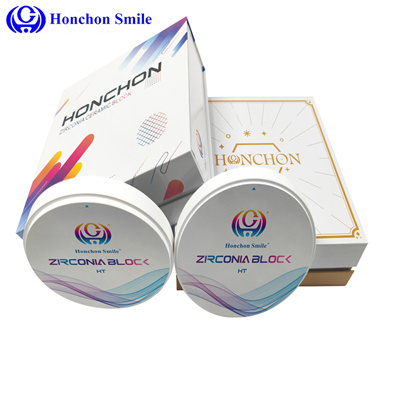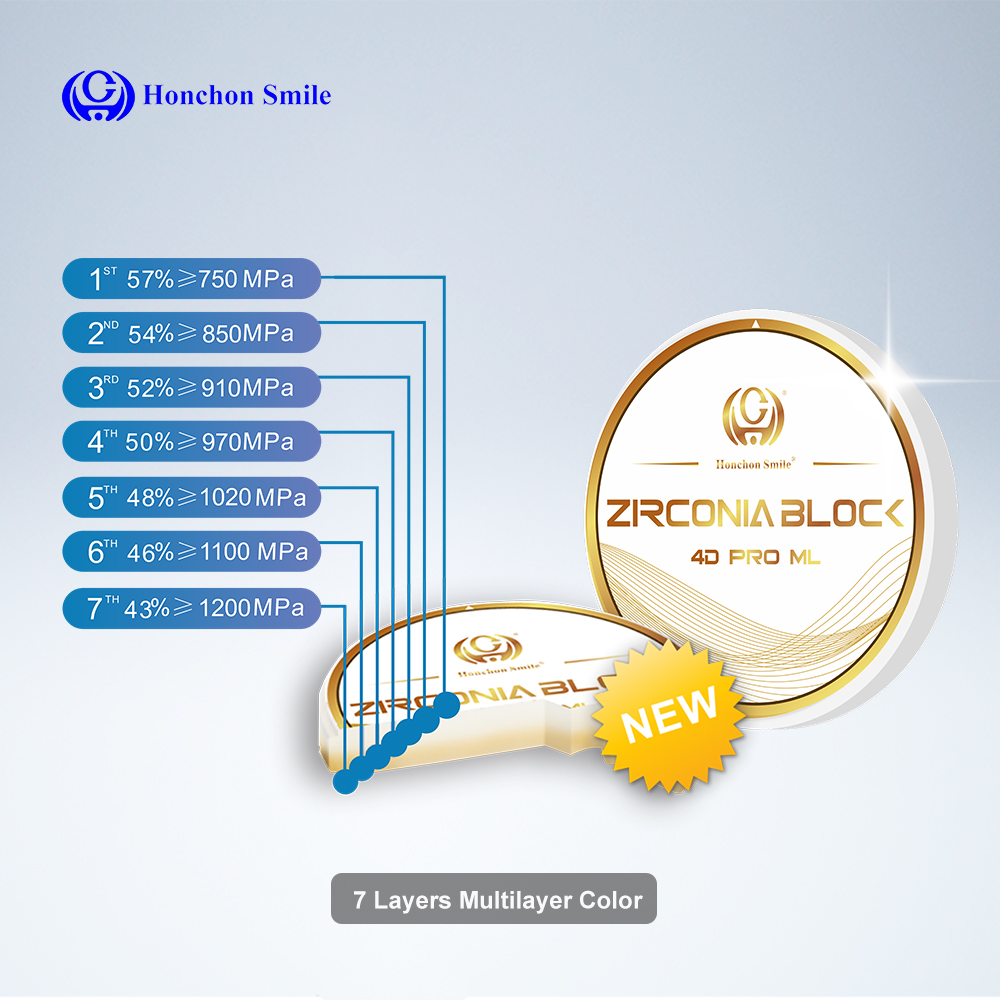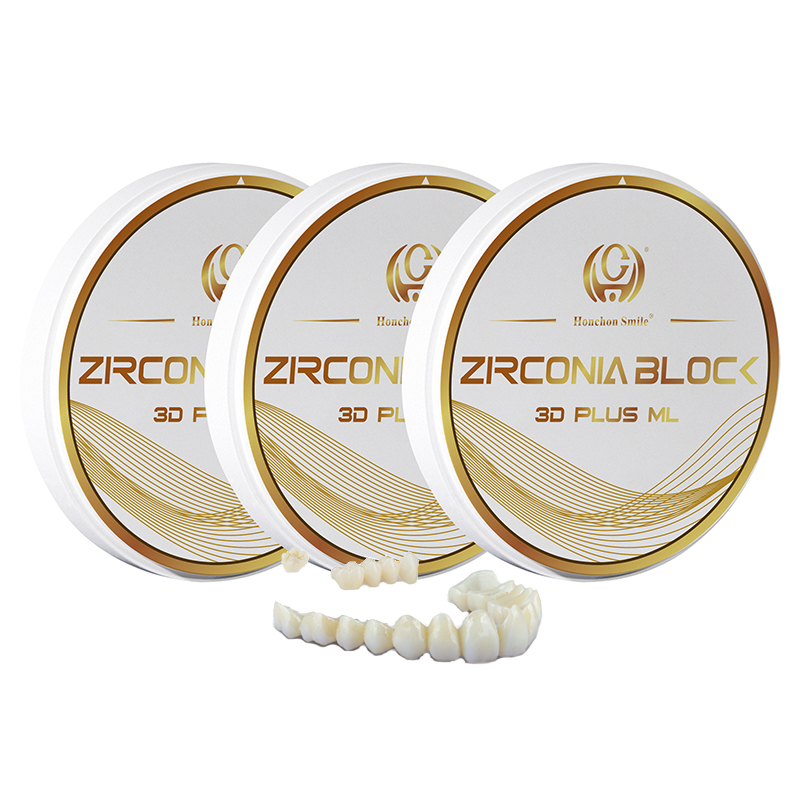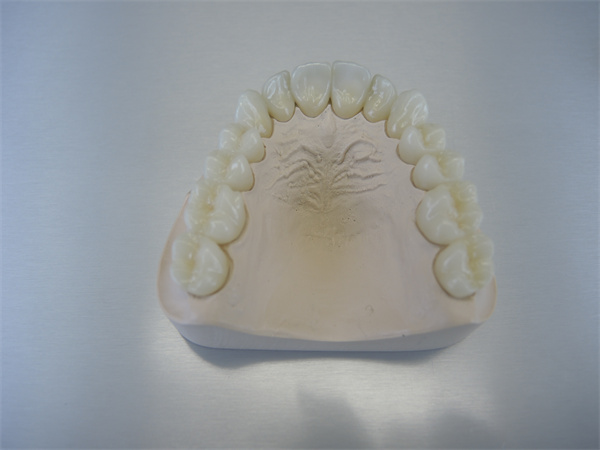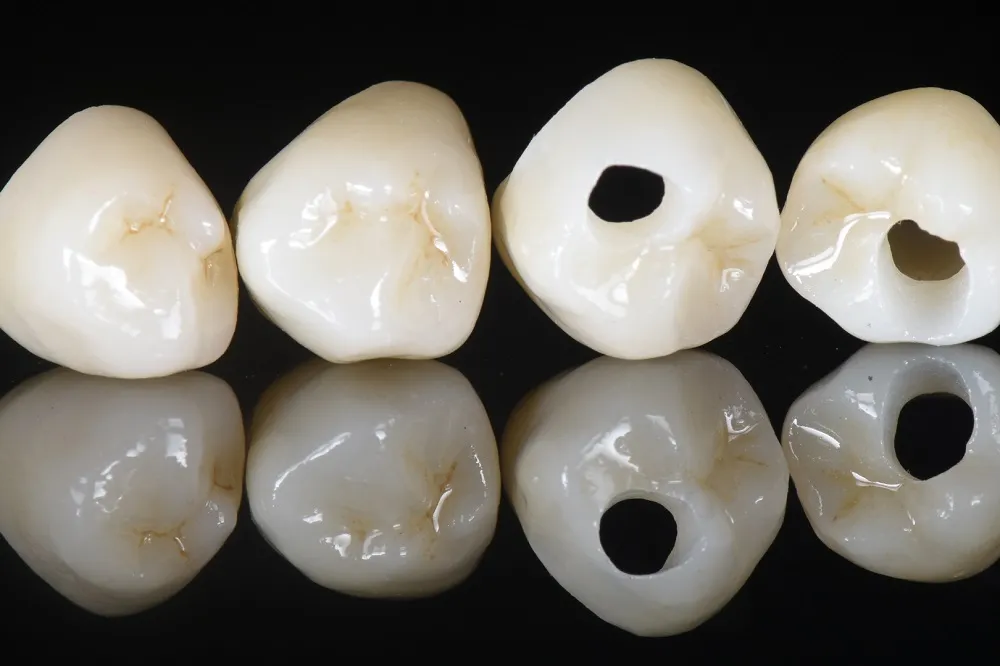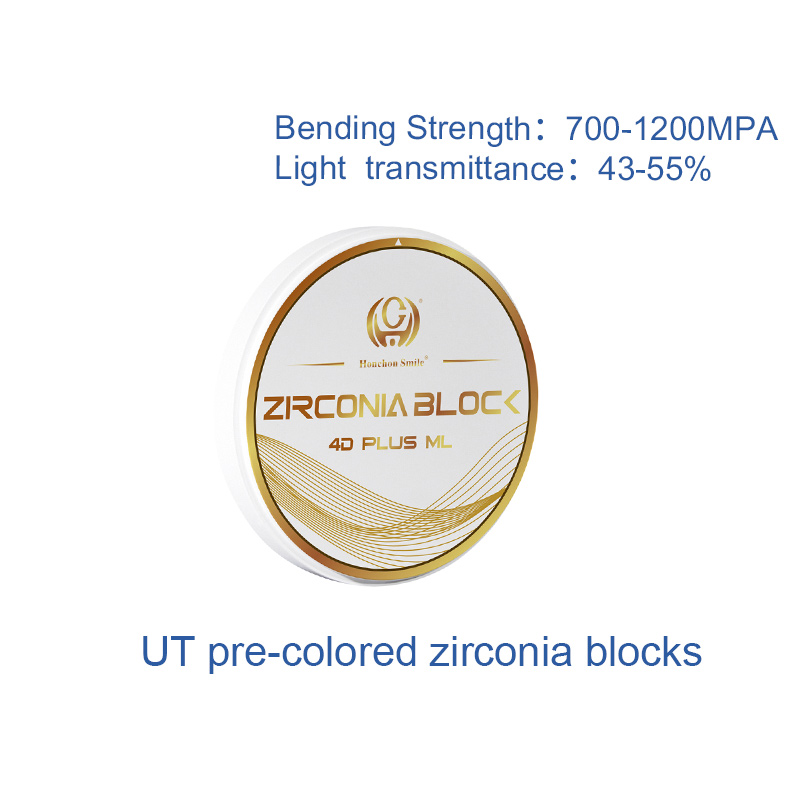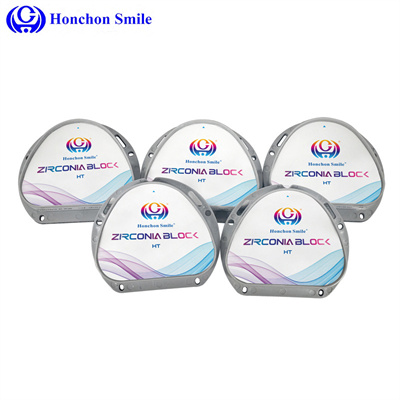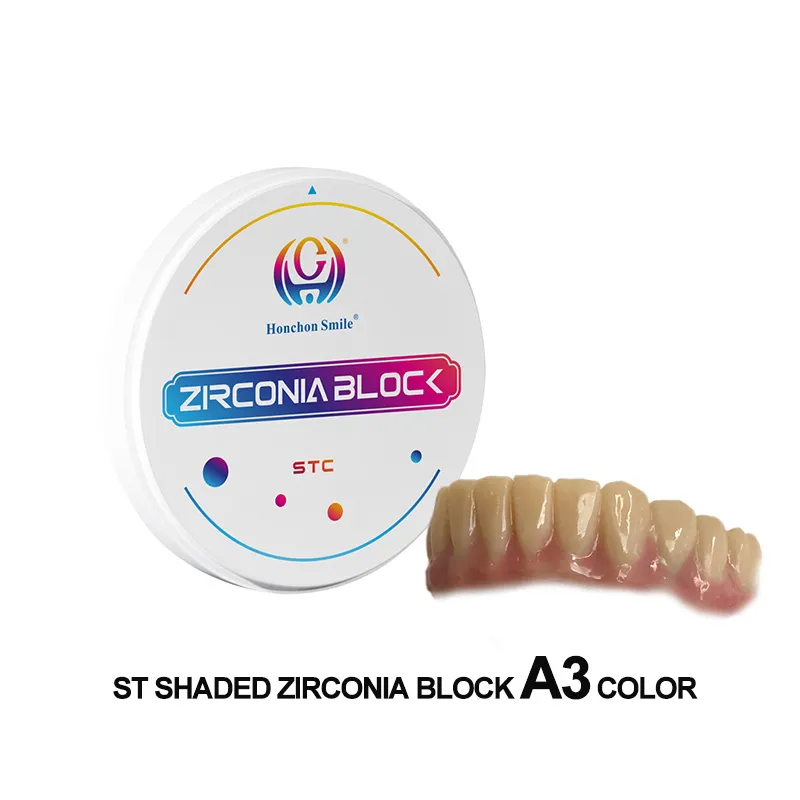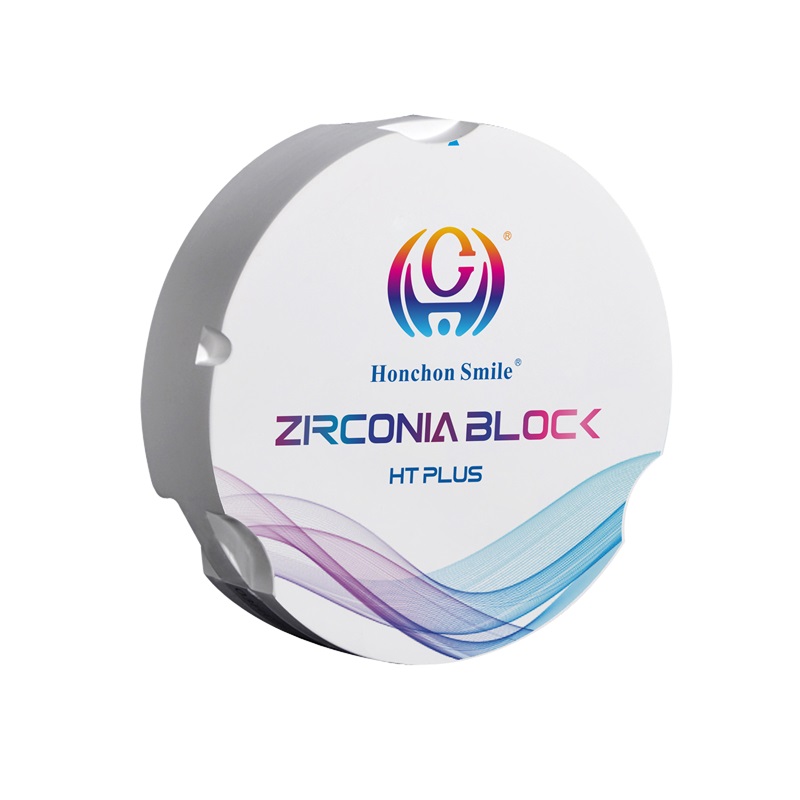The most comprehensive information on porcelain teeth
2024-05-07
1. Classification of porcelain teeth:
one. metal crown
It is an ideal restoration. It is made by first making a metal base from an alloy, and then covering its surface with low-melting porcelain powder similar to natural teeth, which is then sintered and fused in a vacuum high-temperature porcelain furnace. Therefore, the porcelain-fused metal full crown has both the metal and The strength of the crown and the importance of the porcelain full crown. Its characteristics are that it can restore the shape and function of the tooth, has strong fracture resistance (the hardness of porcelain teeth can be equal to the pressure resistance of tooth enamel), and has realistic color and appearance, smooth surface, strong wear resistance, and will not deform. The color is stable, acid and alkali resistant (the mouth will not react even slightly with acidic substances in saliva), and it is a lifelong restoration.
1. Nickel-chromium alloy porcelain teeth: The inner crown is cast from the base metal nickel-chromium alloy. In a complex oral environment, the metal parts exposed to the oral cavity will slowly decompose and release black oxides, causing local tissue staining. , which is the most important reason why this kind of restoration can cause black lines on the gums. Nickel-chromium porcelain teeth are actually the same as steel teeth, except that a layer of porcelain is added to the surface. It is called NP steel in the industry. It contains trace amounts of nickel and beryllium. 0.5%-2% of people will be allergic to nickel. Since the metal is in contact with the gums for a long time, the gums will recede, and the porcelain teeth and gums will appear 1-1.5% A gap of mm may affect the appearance of the front teeth (front teeth) at least, or lead to food impaction, red and swollen gums and tooth decay.
2. Titanium alloy porcelain teeth: mainly refers to Ti-6Al-4V (titanium aluminum vanadium) alloy, in which titanium accounts for a very high percentage. Strangely, a relatively low-priced titanium alloy porcelain now appears in China. In fact, the casting alloy used contains very low titanium content. Its composition is a nickel-based alloy containing 4 to 6% titanium. It is a bit reluctant to say that it is a titanium alloy. The real titanium alloy porcelain is the pure titanium porcelain promoted in China. In countries such as Europe and Japan, nickel-based alloys cannot be used in dentistry. The non-precious metal alloy used in large quantities is cobalt-chromium alloy porcelain. Its biocompatibility, mechanical properties, and heat treatment properties are far superior to nickel-based alloys. Although non-precious metal porcelain teeth are cheap, they have poor compatibility with tissues, are highly irritating, and can cause allergies and discoloration. Therefore, it is not recommended that customers choose porcelain teeth made of this material. The representative of semi-precious metal porcelain teeth is titanium alloy. The main component is titanium or palladium-silver. The price of titanium alloy porcelain teeth is between non-precious metals and precious metals. Its biocompatibility is better than non-precious metals and it is also more durable. , can avoid bleeding gums and black gums. It is also economical, practical and suitable for repairing most teeth.
3. Gold-plated porcelain crown: Gold plating generally means plating a layer of pure gold on the side of the ordinary base metal crown (nickel-chromium or cobalt-chromium) that is in contact with human tissue. The purpose is to reduce the dissociation of the base metal and the damage to the oral tissues and Irritation from the tooth itself. Gold is one of the more ideal repair materials. It has good compatibility with human tissue, is less irritating, and generally does not cause inflammation of the gingival margin. However, gold is expensive, so this gold-plated compromise solution has emerged, which is to find a way to achieve the same or similar effect as gold porcelain teeth at a low price.
4. Cobalt-chromium alloy porcelain teeth: a true non-precious metal porcelain full crown. Cobalt-chromium alloy was first used to make artificial joints. It has outstanding biocompatibility and is now widely used in the field of oral restoration. Because it does not contain any harmful substances Nickel and other elements that are harmful to the human body are safe, reliable and reasonably priced, and have become the first choice of patients and dentists. The use of fixed bridges to repair missing teeth with cobalt-chromium alloy porcelain teeth has become a standard procedure. Cobalt-chromium alloy was first used in transplantation medicine for hip joints. This is also a sign of its biocompatibility and is still used today. It was used in dental care as early as 1929, and was initially used to repair removable partial dentures. Cobalt-chromium alloys are mainly developed to address the toxicity of Ni and beryllium. Their cobalt content is higher than that of nickel-based alloys, generally 25%, as well as elements such as Cu, W, Nb, Si, Ru, Al and Mo. Because it contains higher cobalt content, its corrosion resistance is better than that of nickel-based alloys, and the gold-ceramic bond is good. And because it contains more chromium, its melting point is higher, and there is a certain reaction between the alloy and the investment. The cobalt-chromium alloy used for porcelain has an elastic modulus of 213745Mpa and a hardness of 335 Vickers hardness. Higher elasticity coefficient, high comfort, and no alloy discoloration in the patient's mouth. The difference between the cobalt-chromium alloy used for porcelain and the cobalt-chromium alloy used for making partial denture brackets lies in the carbon content of the alloy. Generally, the former contains little or no carbon.
5. Gold alloy porcelain teeth: Gold alloy porcelain is also called precious metal porcelain. It is not pure gold, but is also sintered with some other metals. Gold accounts for about 70% of it, and the rest is A small amount of precious metals such as platinum, silver, and titanium. Gold porcelain teeth are made of gold with a gold content of 88.7% to make metal crowns. They have been used as filling materials in our country for a long time. It is one of the most ideal restorative materials. one. It has the excellent properties of precious metals, is not easily oxidized and decomposed, does not irritate the gums, will not cause discoloration of the gums, or black lines on the edges of the tooth necks, will not turn blue where the porcelain teeth are in contact with the gums, and has good chemical stability safety, biocompatibility and unique ductility (gold has special physical properties that buffer forces, so it is less likely to cause abutment tooth pain when chewing hard). And because the strength is higher than ordinary porcelain materials, the porcelain powder on the surface of the metal crown sinters with the precious metal better than other metals. The bonding force between gold and porcelain powder is stronger, and the porcelain is not easy to remove after the tooth is repaired. In addition, porcelain powder can reflect its own golden color on the surface of gold. Through the porcelain surface, the color of porcelain teeth is soft, real and natural, which can fully meet the requirements of cosmetic restoration. ,
6. Gold deposition porcelain crown teeth
1. Good edge sealing: The gold deposition porcelain crown uses electroplating technology. After deposition, the inner crown is 99.99% pure gold. Gold ions are deposited very evenly on the formed die in the form of gold atoms under the action of electric current. , so there will be no shrinkage and incomplete edge of the cast crown. Clinically, if the edge gap of the crown is less than 50µm, a long-lasting repair effect can be obtained. The gold-deposited porcelain crown is made using electroplating deposition technology. The porcelain is sintered and fused to the front and rear crowns. The edge gap is 19~60µm[6]. Therefore, the accuracy of the margin is another feature of the gold-deposited porcelain crown, which reduces the occurrence of gingival inflammation.
2. Well-made: Since the inner crown is deposited by electroplating, and this technology requires that only new raw materials can be used, problems such as shrinkage cavities, unevenness, and impurities generated during the metal casting process are avoided;
3. Beautiful appearance: The thickness of the inner crown is only 0.2mm, which is conducive to the shaping of the surface porcelain powder and increases the sense of layering; pure gold is warm yellow, and after heating the porcelain crown, the inner crown still turns warm yellow, which is close to the color of dentin, so gold Deposited porcelain crowns can achieve ideal aesthetic results;
4. Good biocompatibility: Due to the electrochemical inertness of pure gold, it is corrosion-resistant and rarely causes allergic reactions to oral soft tissues. Traditional metal-ceramic crowns enhance the bond between metal and porcelain through the oxidation of alloy components, while gold-deposited porcelain crowns strengthen their bond through gold mud, a gold bonding agent formed by mixing gold powder and porcelain powder particles. . In this way, gold has good biocompatibility as the only metallic component in the combination of the two.
5. Protect teeth: The thickness of gold deposition crowns is generally 0.2 mm. Porcelain restorations with a thickness of 1 to 1.5 mm are performed on this type of crowns. Compared with traditional metal-ceramic full crowns, the amount of tooth preparation is reduced and there are It is beneficial to protect vital pulp teeth; at the same time, because of its unique properties, gold materials have ductility that other metal materials cannot match, and can buffer external impact forces and protect teeth.
6. Extremely high strength: The strength of the gold-deposited porcelain full crown is reflected in the bending resistance of the porcelain, the bonding force between the gold-deposited crown and the porcelain, and the strength of the gold-deposited crown itself. The key is the strength of the metal and porcelain. combine. Many experimental studies [6, 7] have shown that when a pressure load is applied to the incisal end of a gold-deposited porcelain full crown on the anterior teeth, the load value when it fractures is measured to be greater than 150 N (the average chewing force in the anterior region of the mouth is 100 ~150 N); Apply pressure to the 3-unit gold-deposited porcelain fixed bridge on the posterior teeth (the two abutment teeth are gold-deposited crowns, the middle bridge is a high-gold alloy casting, and the surface is welded into one and the surface is repaired with porcelain). According to the measurement, the average load value when it ruptures is 1 413 ± 291 N (the minimum ultimate load value of the fixed bridge in the posterior tooth area of the mouth is 1 000 N). Its strength is higher than all-ceramic fixed bridges made by In-Ceram and Dicor.
•The body preparation requirements are basically the same as those of ordinary porcelain technology. They are required to be as smooth as possible, without undercuts, and have a very clear cervical edge and shoulder preparation. In addition, sufficient tooth preparation is required on the lingual side of the anterior teeth because the gold deposition bakes The lingual side of the porcelain crown is fully covered with porcelain, and clenched jaw cannot be repaired with this method. Before shoulder preparation, use the gingival recession line for gingival retraction. The shoulder is prepared into a clear concave arc shape to 0.4 to 0.5 mm below the gums. The entire shoulder is continuous, complete, and smooth. All cavities and defects must be repaired before taking the impression. This is also the key to determining the life of the gold-deposited porcelain crown. Try to avoid filling it with cementing materials in the future. When wearing the crown for the first time in clinical practice, pay attention to the edge of the crown and do not use excessive force. Just use zinc phosphate cement to bond it. After the cement dries, remove excess cement to complete the repair.
two. All porcelain
They are made of new castable ceramic materials. Compared with metal-ceramic teeth, their biggest difference is the inner crown. The inner crown of all-ceramic teeth is porcelain, which is a transparent skeleton without a metal base layer. Since all-ceramic teeth do not have metal base crowns, they effectively avoid problems such as metal allergies and black gum lines, and have no toxic or side effects on human health. The inner crown of an all-ceramic tooth is a layer of all-ceramic transparent supporting frame, and then a layer of porcelain powder that is similar in color to natural teeth is baked on the outer crown surface. All-ceramic teeth are the most aesthetically pleasing dental restorations. They are hard, wear-resistant, and have high compressive strength (bending strength up to 650MPA, shrinkage rate 1%). They have a natural and innocent appearance, crystal clear, excellent light transmittance, and color. Realistic and close to natural teeth. In addition, if the dentures in your mouth are metal-containing porcelain crowns, artifacts will be formed nearby when you need to undergo cranial X-ray, CT, or MRI examinations in the future, affecting the surrounding ear, nose, throat, ophthalmology and other cranial tissue systems. Check the effect. Non-metal all-ceramic teeth have no obstruction to X-rays and are transparent to X-rays, making them the best choice for patients who need MRI examinations. All-ceramic teeth have a wide range of indications, and can be used to repair serious oral misalignments, dental gaps, tetracycline teeth, dental fluorosis, deformed teeth and various tooth roots that cannot be filled with porcelain. In recent years, all-ceramic dental restorations have become a new fashion in modern dental beauty, especially suitable for people with severe tetracycline teeth and missing teeth.
1. Cast porcelain: All-ceramic crowns made of alumina porcelain powder and zirconia.
Advantages: 1. Unparalleled natural innocence effect and excellent biocompatibility~~The reflection of light is closer to natural teeth, the color is more natural, and more realistic than porcelain teeth; it has excellent biocompatibility with gums, It will not discolor or deform, will not cause any irritation to the gums, and will not form a gray line on the gums; porcelain teeth with metal inner crowns will dissolve under the action of saliva and deposit on the gums to irritate the gums, causing the gums to turn blue and blue. Inflammation and atrophy.
2. The material has a strong bond and is not easy to chip. The wear resistance of all-ceramic teeth is similar to that of natural teeth. The inner crown of all-ceramic teeth is made of alumina and zirconia powder. The combination of porcelain and porcelain is a soluble bond, which is very strong; Porcelain is a combination of metal and porcelain powder, which is a mechanical combination. The bonding degree is not as high as that of cast porcelain, and the porcelain is easy to collapse.
3. All-ceramic bonding~~The bonding agent can change the color of porcelain teeth, reducing rework due to color differences. Glass ionomer bonding agents can also be used for bonding.
Disadvantages: The amount of real tooth tissue that needs to be removed to cast porcelain teeth is more than that of porcelain crowns, otherwise the porcelain layer is too thin and will easily break. The strength of cast porcelain teeth is not as high as that of porcelain teeth. It is generally only used for the repair of single crowns, inlays, onlays and veneers of front teeth, but not for the repair of posterior teeth. Cast porcelain is a translucent material, and cast porcelain crowns are relatively Transparent, there is no metal inner crown to cover the internal tooth part, so for some residual root crowns, the cast porcelain crown must use the corresponding cast porcelain post. With general cast metal posts, the metal color will be revealed; when the patient uses When having porcelain teeth or cast porcelain teeth, you should try to avoid chewing hard foods to prevent the porcelain layer from cracking. If the porcelain layer is broken, you should go to the dental department for repair or re-inlay in time.
2. Alumina all-ceramic teeth: Using porcelain deposition technology, high-strength aluminum oxide is used to stack the inner layer of the crown in layers. It has good adhesion, excellent simulated appearance and biocompatibility. The transparency is far greater than that of ordinary porcelain teeth, and there will be no adverse reactions on the gums, and the repair effect is perfect and natural. There is no obstruction to X-rays, and there is no need to remove the dentures when skull X-rays, CT, or MRI examinations are required in the future. However, it is inferior to zirconium dioxide in strength and hardness.
3. Zirconia porcelain teeth: In addition to having all the advantages of cast porcelain and alumina, zirconium dioxide porcelain teeth also make up for their shortcomings. Zirconium dioxide is a mineral found in nature as baddeleyite. Medical zirconium oxide has been cleaned and processed, and a small amount of α-ray residue remains in the zirconium. Its penetration depth is very small, only 60 microns. Its density and strength are very high, its strength is 1.5 times higher than the second generation of EMPRESS, and more than 60% higher than INCERAM zirconia. With its unique fracture resistance and strong curing performance after fracture, it can produce more than 6 units of porcelain bridges. It solves the problem that all all-ceramic systems cannot make long bridges. Compared with other all-ceramic restoration materials, the strength advantage of zirconium dioxide material allows doctors to achieve extremely high strength without excessive grinding of the patient's real teeth. Among them, Vita all-ceramic plus yttrium-stabilized zirconia is known as ceramic steel. Zirconia porcelain teeth are an excellent high-tech biomaterial. It has good biocompatibility and is better than various metal alloys, including gold. It is also non-irritating to the gums and has no allergic reaction. It is very suitable for use in the oral cavity and avoids adverse reactions such as allergies, irritation, and corrosion caused by metal in the oral cavity. The natural feel of tooth color and unobtrusive crown edges are also benefits of using zirconium dioxide all-ceramic restorations. In particular, patients with high aesthetic requirements pay more attention to the natural color, because this makes the restoration and the healthy teeth integrated and difficult to distinguish.
2. The function of porcelain teeth
Experts say that loose teeth caused by periodontal disease can be preserved to the maximum extent through porcelain tooth restoration. First, change the length of the crown to make it shorter, so that the proportion of the crown and the gums is more coordinated, and the center of gravity of the force is kept stable when chewing food, thereby protecting the stability of the teeth and relatively extending the service life of the teeth. Usually, the method of treating dental caries is to fill the teeth with composite materials such as resin. Some customers can be cured by treatment and improving oral hygiene. However, some patients will have more than three new caries every six months after treatment. For these caries, For high-risk groups, in order to effectively avoid rapid dental caries caused by bacteria, porcelain teeth can be repaired. Porcelain teeth treated at high temperatures are strong and durable, and bacteria cannot survive on their surface. It is like putting on a strong "isolation coat" for the teeth, making it "impermeable" for caries.
3. Cosmetic properties of porcelain teeth
Porcelain teeth, which can both restore tooth function and have cosmetic effects, have become people's first choice for treatment and teeth beautification. However, many friends are faced with numerous porcelain dental materials and do not know how to choose during medical treatment? Oral professional doctors must make carefully personalized designs based on each person's facial features, lips, tooth shape, gender, age, occupation, etc.
We use precision dimensional measurement and clinical preparation to provide expert technicians with accurate porcelain tooth models. At the same time, select appropriate porcelain materials to ensure that the shape and color of porcelain teeth meet aesthetic requirements. The midline of porcelain teeth should be parallel to the midline of the face. When smiling, the upper dental line should be parallel to the inside of the lower lip line. Just covered by the inside of the upper lip line. By using the proportion of porcelain teeth determined after the golden section, it can not only increase the balance of the corners of the mouth when smiling, making the smile more natural, full of vitality and soul, but also make the repaired teeth comfortable and easy to use.
4. How to judge the quality of porcelain teeth:
1. The position of the edge of the porcelain teeth: The back edge of the porcelain teeth should be located between the tooth body and the gingival margin, and about 0.5 mm deep below the gingival margin. From the outside, porcelain teeth are integrated with the gums, just like natural teeth.
2. The tightness of the gap between the teeth: the porcelain teeth and adjacent teeth should be in moderate contact. If it is too tight, the patient will feel severe squeezing; if the gap is too large, food impaction may occur after eating, which may lead to dental caries and gingivapillary inflammation. Moderate contact means that the patient feels a slight squeezing. You can use dental floss to self-check, that is, you feel a certain resistance when the dental floss passes through the gap between the teeth from top to bottom.
3. Chewing comfort: After wearing porcelain teeth, patients should try normal biting movements to feel whether the force on the teeth is even during chewing and whether there is any soreness or swelling.
4. Color: Under natural light, the color and gloss of porcelain teeth should be similar to those of adjacent teeth, with a sense of layering and transparency; especially the front teeth, pay attention to the tone and gloss from the incisal edge to the neck of the tooth. Should be consistent. Patients with tetracycline teeth and dental fluorosis should check whether the color of the porcelain teeth is consistent with the color of the gums and skin.
5. Shape and arrangement: Porcelain teeth should have the normal shape of natural teeth, and their size should be coordinated with adjacent teeth and consistent with the symmetrical teeth of the same name. The incisal ends of the front teeth should be on the arc of the dental arch, and the cusps of the back teeth should be on the line connecting the natural cusps.


